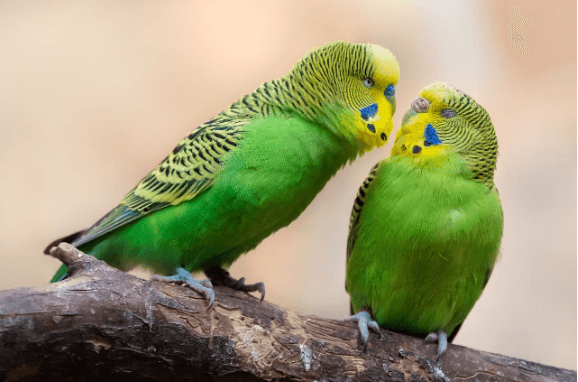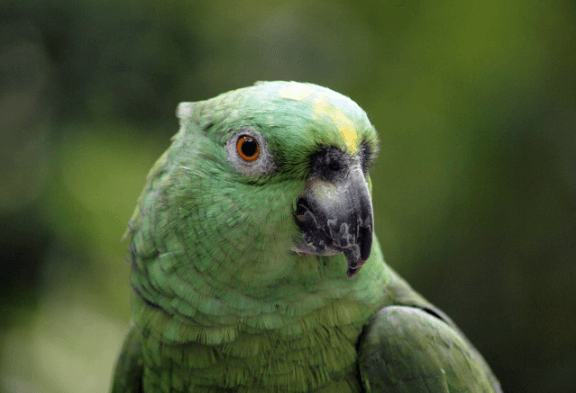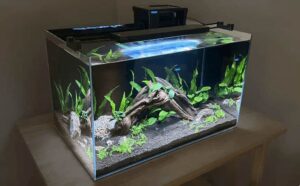Are you considering getting a pet bird but live in an apartment? Small birds for apartment living are an excellent choice for those with limited space. They are low-maintenance, highly social, and can bring joy with their songs and playful nature. In this guide, we’ll cover the best small birds suited for apartment life and provide essential care tips.
Why Small Birds Make Great Apartment Pets
Space-Saving and Low Maintenance
Unlike larger pets, small birds require minimal space and are relatively easy to care for. A properly sized cage, food, water, and some toys are enough to keep them happy.
Entertaining and Interactive
Many small bird species enjoy human interaction, making them delightful companions. They can also be trained to do tricks and even mimic sounds or words.
Affectionate and Social
Despite their small size, many birds form strong bonds with their owners. With proper training, they can be affectionate and enjoy spending time with humans.
Best Small Birds for Apartment Living
Not all birds are suited for apartment life. Here are some of the best small birds that thrive in compact living spaces:
1. Budgerigar (Budgie) – The Perfect Apartment Parrot

Budgerigars, commonly called budgies or parakeets, are intelligent, friendly, and playful birds that make great apartment pets. While they chirp throughout the day, their voices are not loud enough to disturb neighbors. Budgies enjoy interacting with their owners and can even learn to mimic words!
Why Budgies Are Great for Apartments:
- Small in size – requires a compact cage
2. Low noise level – gentle chirping instead of loud squawking
3. Easy to train and highly social
Species Overview:
- Length: 6 to 8 inches
- Weight: 1 ounce
- Physical Characteristics: Green body, yellow head, blue tail; mutations include blue, white, gray, and yellow
2. Canary – A Beautiful and Melodious Pet

Canaries are one of the best birds for small spaces because they are independent and require minimal interaction. They have a soft, melodious song that isn’t disruptive, making them a fantastic choice for apartments.
Why Canaries Are Great for Apartments:
- Low maintenance – requires little handling
2. Pleasant, quiet singing (especially males)
3. Doesn’t need much space – small cage is enough
Species Overview:
- Length: 5 to 8 inches
- Weight: 0.5 to 1 ounce
- Physical Characteristics: Bright yellow (most common), red, orange, or white; some have frilly feathers or crests
3. Finch – Social and Low-Noise Companion

Finches are small, quiet birds that prefer the company of their own kind rather than human interaction. They are easy to care for, don’t demand attention, and make soft, pleasant chirps. Since they don’t require out-of-cage playtime, a spacious cage is enough for their exercise.
Why Finches Are Great for Apartments:
- Very quiet – soft chirping, not loud squawking
2. Requires minimal interaction – great for busy owners
3. Small size – easy to accommodate in an apartment
Species Overview:
- Length: 4 inches
- Weight: 0.5 ounce
- Physical Characteristics: Various colors; zebra finches have black and white throat bars, orange cheeks, and a red beak
4. Cockatiel – Friendly and Affectionate

Cockatiels are social birds that love human interaction. While they are larger than budgies, their whistles and soft chirps are unlikely to disturb neighbors. They are intelligent and trainable, making them great pets for those who want an interactive companion.
Why Cockatiels Are Great for Apartments:
- Friendly and affectionate – bonds well with owners
2. Soft whistling instead of loud screams
3. Can learn tricks and mimic sounds
Species Overview:
- Length: 12 to 13 inches
- Weight: 3 ounces
- Physical Characteristics: Gray body, yellow face, orange cheeks; mutations include albino, cinnamon, and pied
5. Parrotlet – Tiny but Full of Personality

Parrotlets are the smallest parrots, but they have big personalities. Unlike other parrots, they do not scream, and their chirps are gentle. They love to play, hop, and swing but do not need a large cage to stay happy.
Why Parrotlets Are Great for Apartments:
- Tiny size – perfect for small spaces
2. Soft chirps – very little noise
3. Playful and energetic but doesn’t need a huge cage
Species Overview:
- Length: 4 to 5 inches
- Weight: 1 ounce
- Physical Characteristics: Green body, blue markings; mutations include yellow, white, and blue
6. Pionus Parrot – A Larger but Quiet Option

For those who want a bigger parrot without the noise, Pionus parrots are a great choice. These birds are gentle, quiet, and easygoing, making them one of the most apartment-friendly larger parrots.
Why Pionus Parrots Are Great for Apartments:
- Much quieter than other parrots like African Greys or Macaws
2. Gentle and easy to handle
3. Doesn’t require excessive attention
Species Overview:
- Length: 11 inches
- Weight: 8 to 9 ounces
- Physical Characteristics: Blue head, green body, red tail undersides
7. Bourke’s Parakeet – A Calm and Mellow Bird

Bourke’s parakeets are mellow, peaceful birds that thrive in quiet homes. Unlike other parakeets, they are less active and do not chirp frequently, making them one of the best small birds for apartment living.
Why Bourke’s Parakeets Are Great for Apartments:
- Calm and quiet – perfect for low-noise environments
2. Gets along well with other birds
3. Doesn’t require constant interaction
Species Overview:
- Length: 7 to 9 inches
- Weight: 2 ounces
- Physical Characteristics: Brown-tinted plumage, pink abdomen, blue rump
8. Senegal Parrot – A Quiet & Affectionate Companion

Senegal parrots are much quieter than most parrot species, making them great for apartment living. They form strong bonds with their owners and thrive on daily interaction.
Why Senegal Parrots Are Great for Apartments:
- Quiet – does not scream like other parrots
2. Affectionate and forms strong bonds
3. Medium size – does not need an overly large cage
Species Overview:
- Length: 10 inches
- Weight: 4 to 5 ounces
- Physical Characteristics: Gray head, green wings, V-shaped yellow-orange patch on belly
Key Considerations Before Bringing a Bird Home
Before adopting a bird, consider the following factors:
- Noise Level: While small birds are quieter than large parrots, some species chirp more frequently.
- Lifespan: Some birds live for over a decade, requiring a long-term commitment.
- Daily Care Needs: Birds require fresh food, water, and a clean cage daily.
- Socialization Requirements: Some birds need daily interaction, while others are more independent.
Setting Up the Perfect Bird Environment
- Choose the Right Cage: Ensure the cage is spacious enough for movement and wing flaps.
- Perches and Toys: Provide different textures of perches and interactive toys.
- Proper Placement: Keep the cage in a well-lit, draft-free area away from kitchen fumes.
Feeding and Nutrition
A balanced diet is key to a bird’s health:
- Seeds and Pellets: Main dietary components
- Fruits and Vegetables: Fresh options like apples, carrots, and leafy greens
- Fresh Water: Ensure clean water is available at all times
Health and Wellness
- Regular Vet Checkups: Helps detect potential health issues early.
- Clean Cage Routine: Prevents bacteria and diseases.
- Monitor Behavior: Watch for signs of illness such as lethargy, loss of appetite, or feather plucking.
Socialization and Interaction
- Training and Bonding: Some birds can learn tricks and enjoy interaction.
- Talking and Singing: While not all small birds talk, many enjoy human interaction.
- Companion Birds: Some species, like finches, thrive better in pairs.
Common Challenges and Solutions
- Messiness: Birds can scatter food and feathers, requiring regular cleaning.
- Noise Sensitivity: Consider quieter species if noise is a concern.
- Loneliness: Social birds require interaction or a companion bird.
Why Choose Our Website?
At HomePetsAdvisor.com, we provide expert insights and trustworthy advice on pet care. Our content is well-researched, engaging, and tailored for pet enthusiasts seeking reliable information. Explore our website for more pet-related guides, tips, and recommendations!
Conclusion
Small birds are excellent companions for apartment living, offering beauty, entertainment, and affection without requiring excessive space. By selecting the right bird, setting up a proper environment, and understanding their needs, you can ensure a fulfilling experience as a bird owner. Start your journey today and enjoy the joys of bird companionship!











